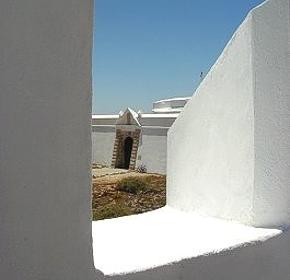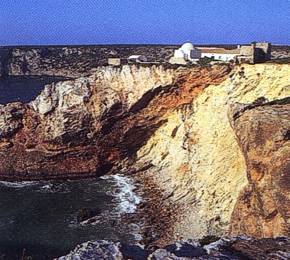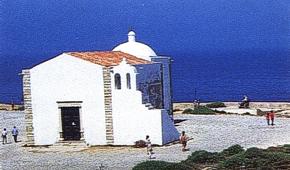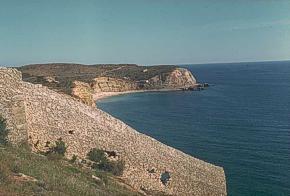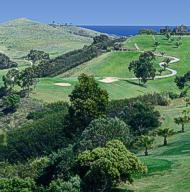|
Tourism |
|
| Portugal > Tourism > Algarve > Vila do Bispo | |
| History | Beaches | Golf | Sightseeing | Gastronomy | Lodging | |
|
The mythical atmosphere surrounding Sagres and Cabo de São Vicente ( Cape St. Vincent), places dedicated to the gods for thousands of years. The unspoilt coastline with its dramatic horizons of cliffs and sea. The many menhirs that bear witness to prehistoric rites. Memories of the epic of the Discoveries and the enigmatic figure of Prince Henry the Navigator. Such are the attractions of Vila do Bispo and its municipality, a vast triangle in which the sea is a constant presence. And where nature combines with history to create a unique region that is worth taking the time to get to know. |
|
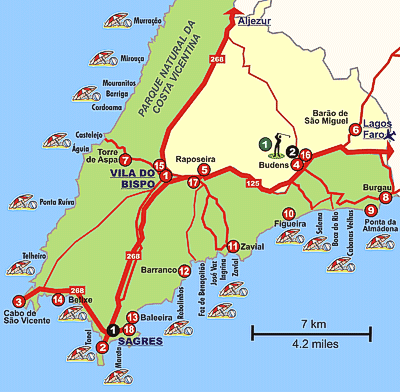 |
| History |
|
It is agreed that the human presence in the south-western Algarve
goes back at least as far as the Neolithic period and, if some shallow
graves are to be trusted, |
| Beaches |
|
The coast which extends to the north and east of Cabo de São Vicente (Cape St. Vincent) is dotted with more than 20 beaches. Some are sandy coves hidden at the foot of cliffs, others broad expanses of sand that stretch away to the horizon. Each has its own particular charm. All invite you to discover them and to rediscover peace and solitude. |
|
Murração - A small beach with
a broad stretch of sand.
Mirouço - An isolated beach. Access difficult. Mouranitos, Barriga and Cordoama - A series of broad beaches separated by cliffs but with access between them. Very quiet. Castelejo - A beach surrounded by rock formations. Tourist facilities. Águia & Ponta Ruiva - Stretches of sand at the foot of steep escarpments. Little visited. Telheiro - Pleasant sheltered beach. Belixe - Sandy beach at the font of a small bay scooped out of the cliff. Calm. Tonel - A sheltered beach with good views of the Ponta de Sagres and Cabo de São Vicente. Support facilities. Mareta & Baleeira - Long beaches. Tourist facilities. Starting point for discovering the underwater delights of a coast dotted with caves and hollows. Martinhal & Rebolinhos - Long beaches surrounded by a broad bay. Scenic islets opposite the beach. Tourist facilities. Barranco, José Vaz, Ingrina & Zavial - Sandy coves on the edge of little bays. Calm. Tourist facilities. Figueira & Foz de Benaçoitão - Small isolated beaches. Salema - Located in a picturesque fishing village. Pleasant beach. Tourist facilities Boca do Rio - Stretch of sand along the bottom of a valley crossed by two gentle streams. Peaceful. Cabanas Velhas & Almadena - Small and seldom visited beaches. Burgau - A typical fishing port looking out on the sea. Calm and family oriented. Tourist facilities. |
|
  |
| Golf |
|
|
|
 |
| Sightseeing |
|
Main Church |
|
 |
|
Fortress - Dating back to the 15th century,
and successively rebuilt and repaired in the 16th, 17th and 18th centuries.
Adjoined be former batteries that defended the beaches of Tonel and
Mareta. |
|
|
|
For the Romans the whole area was part of the Promontorium Sacrum
(from which the name Sagres is derived), the most westerly point of
the world, where the setting sun made the waters of the ocean boil. |
|
|
|
Fortress - The fortress was built in the 16th century and rebuilt in the 17th and 18th centuries. The arms of King João III are visible on the main gate. Inside is to be found the former monastery of Hieronymite friars, founded in the 16th century, and a chapel dating back to the 14th century, built on what is traditionally said to be the site of São Vicente's grave. The curious lighthouse at the extremity of the Cape is an updated version of the beacon that the Bishop of the Algarve Fernando Coutinho had built for the safety of shipping in 1515. |
|
|
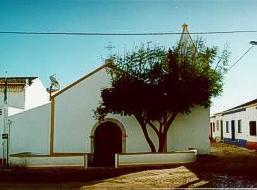 |
|
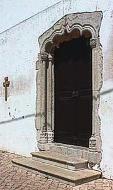 |
|
 |
|
|
|
|
|
|
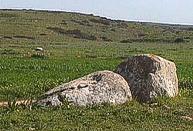 |
|
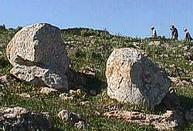 |
|
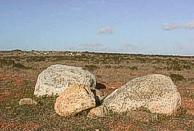 |
| Gastronomy |
| Sea on two sides, land on one. The cooking typical of Vila do Bispo reflects this dual influence in dinners of chickpeas and boiled cabbage flavoured with cured meats, in the presence of corn flour in maize-meal with sardines, in delicious fish dishes: conger risotto, baked dory or sea bream, fish stews, fried morey sandwiches. Shellfish in Vila do Bispo is always tempting, such as barnacles and whelks harvested from the rocks or the lobsters that the boats bring in at dawn. Sagres honey cake is what the Vila do Bispo area has to offer those who appreciate something sweet. |
|
 |
| Lodging |
|
The Pousada features: 38 Rooms, 1 Suite, Swimming Pool, Tennis courts and Meeting rooms. |
|
 |
|
|
|
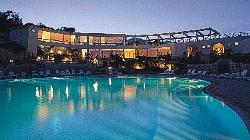 |
|
|
|

|
| History | Beaches | Golf | Sightseeing | Gastronomy | Lodging | |
| Portugal > Tourism > Algarve > Vila do Bispo | |
|
Vila
do Bispo |
|

 may
date to the Palaeolithic period, when Europe was jointed to Africa
by art isthmus. The large number of menhirs - standing alone, in groups
or in cromlechs - is one of the roost important vestiges of the past
to be found in the Vila do Bispo area. Also of interest is the fact
that their use in religions rites continued, in the Cabo de São
Vicente (Cape St. Vincent) area, until the period of the Roman occupation:
The religious importance of the Cape persisted in the Middle Ages
with the pilgrimages that were made ever - during the centuries of
Arab rule, to the burial place of São Vicente (St. Vincent.
In the 15th century, the presence of Prince Henry the Navigator at
Sagres and the undertaking known as the Discoveries ensured Vila do
Bispo a prominent place in history. Identified by some authors as
the site of the then famous Igreja don Corvos (Church of Crows) mentioned
by Arabic chroniclers, Vila do Bispo has its origins in a village
which was bequeathed to the Algarve Diocese at the beginning of the
16th century, grad was elevated to the status of a town in 1633. It
suffered serious damage in the earthquake of 1755. Proud of its past
and of its participation in the Discoveries. Vila do Bispo and its
municipality are art integral part of the Algarve of the present and
the future.
may
date to the Palaeolithic period, when Europe was jointed to Africa
by art isthmus. The large number of menhirs - standing alone, in groups
or in cromlechs - is one of the roost important vestiges of the past
to be found in the Vila do Bispo area. Also of interest is the fact
that their use in religions rites continued, in the Cabo de São
Vicente (Cape St. Vincent) area, until the period of the Roman occupation:
The religious importance of the Cape persisted in the Middle Ages
with the pilgrimages that were made ever - during the centuries of
Arab rule, to the burial place of São Vicente (St. Vincent.
In the 15th century, the presence of Prince Henry the Navigator at
Sagres and the undertaking known as the Discoveries ensured Vila do
Bispo a prominent place in history. Identified by some authors as
the site of the then famous Igreja don Corvos (Church of Crows) mentioned
by Arabic chroniclers, Vila do Bispo has its origins in a village
which was bequeathed to the Algarve Diocese at the beginning of the
16th century, grad was elevated to the status of a town in 1633. It
suffered serious damage in the earthquake of 1755. Proud of its past
and of its participation in the Discoveries. Vila do Bispo and its
municipality are art integral part of the Algarve of the present and
the future.